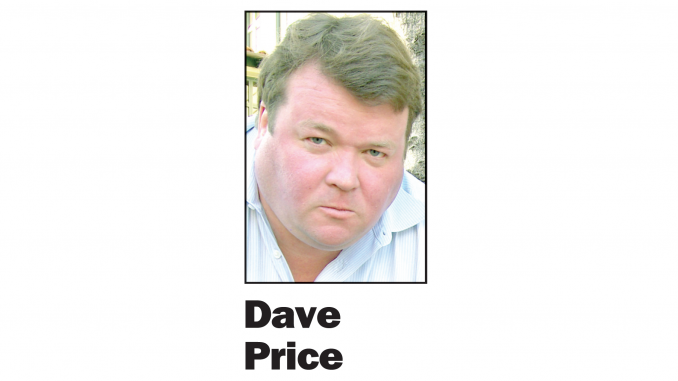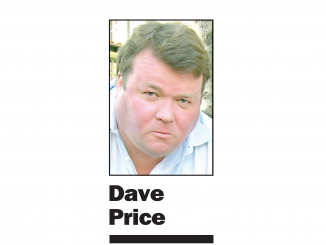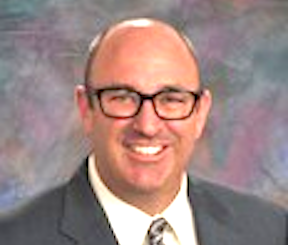
OPINION
BY DAVE PRICE
Daily Post Editor
My column today might seem too wonky, but please follow along. I’ve got an important point to make.
I think it’s safe to say that the Palo Alto school board and the district as a whole are trying to recover from several years of errors that have diminished the public’s trust.
The errors have been well documented — multimillion-dollar budget mistakes, the decision to allow a sex offender to return to Palo Alto High School and the subsequent coverup, failures to follow the Title IX law, blatant violations of the California Public Records Act and a proposed agreement to accept 30 cents on the dollar for educating students from tax-exempt Stanford properties (an agreement that was scuttled following public criticism).
With that abysmal record, you’d think the school board would be doing everything in its power to re-build public trust and welcoming the advice it gets from our well-informed community.
But on today’s (Sept. 10) school board agenda is a proposal to eliminate the “two meeting rule,” which requires the board to discuss a proposal at one meeting and then vote on it at a second meeting two weeks later. The board can bypass the rule, like if there’s an emergency situation, but this proposal would do away with the rule altogether.
Trustee Ken Dauber called for eliminating the two-meeting rule in his re-election campaign last year, pointing out that it can take a month to move forward with an agenda item. His goal is to have the board operate more efficiently. He called the two-meeting rule the “do everything twice rule.”
Four days warning
Without the two-meeting rule, proposals would surface on Fridays when the board’s agenda comes out and then the vote would take place on Tuesday, four days later. That doesn’t give the public much time to read, digest and respond to a proposal.
What happens now is that people learn that the board is considering a particular action based on news coverage or parent discussion of the first reading by the board. That gives interested individuals two weeks to contact the board with their opinions and prepare their arguments for the public hearing at the meeting when the final vote takes place.
Between the first and second meetings, the superintendent can improve a proposal based on comments from the public or board. With one reading, that ability to improve a proposal is lost.
Eliminating the two-meeting rule also reduces the trustees’ opportunities to discuss the proposal with one another. The state law regarding government meetings, the Brown Act, prevents trustees from discussing issues with more than one other trustee between meetings. With the two-meeting rule, trustees can discuss the merits of a proposal with all of their colleagues at both meetings. Who knows, maybe one of them will persuade the others to change their vote on a proposal?
Such give-and-take between the trustees is less likely to happen with one meeting.
City Council’s two-meeting rule
The two-meeting rule isn’t unique to the Palo Alto school board. Chapter 2.04.270 (b) of the Palo Alto Municipal Code (see below) requires the Palo Alto City Council to hold two readings of a proposed ordinance, with certain exceptions like emergencies.
For efficiency’s sake, the Municipal Code says that second readings can be placed on the council’s consent calendar, when a number of non-controversial items can be voted upon at the same time. A majority of council members can remove any item from the consent calendar for debate and discussion, which frequently happens.
One advantage of the two-meeting rule is that it makes it more difficult for the superintendent to slip something by the public without a robust discussion. Often administrators don’t want any public debate, preferring a quick approval instead.
Given the district’s history, the board should be encouraging public participation, not squelching it. The board should always seek the advice of community members. Instead of sliding proposals by the public, the board should take a stand in favor of transparency and keep the two-meeting rule the way it is.
Editor Dave Price’s column appears on Mondays. His email address is [email protected].
Extra information
Text of Palo Alto Municipal Code Section 2.04.270 (b)
“(b) Second Reading of Ordinance. With the sole exception of ordinances which take effect upon adoption, no ordinance shall be passed by the council on the day of its introduction nor within ten days thereafter, nor at any other time than at a regular or special meeting. Ordinances presented to the council for second reading shall be agendized as consent items and may be removed for debate and discussion only upon a majority vote of the council members present and voting. This section shall not prevent council members from making short comments on consent items.”
How does this work? Here’s the agenda of the Aug. 5, 2019, Palo Alto City Council meeting. Note that items 6 and 9 are second readings.
Other cities have a policy of two readings. Here’s a Menlo Park City Council meeting agenda from Aug. 27, 2019. Note that item G1 is a second reading.
Only a fraction of the local news stories covered by the Daily Post appear on this website. To get all the local news, including many stories you can’t find online, pick up the Post every morning at 1,000 Mid-Peninsula locations.




Dave Price is so wrong about this. How can anybody object to efficiency? Four days is plenty of time, people need to do a better job paying attention to board agendas. Lengthy community debates on issues aren’t productive.
First they reduced public comments from 3 minutes to 1 or 2 minutes for controversial agenda items. Now they’re trying to get rid of the two-meeting rule. Not only will this halve the number of board meetings where the public can comment on a given topic, it will also limit the public’s ability to do research. It will make it harder for board members who want to do their own research on a topic before making decisions. The only people it will help are the board members who have their own agenda and want to impose it upon everyone else.
Two wrongs don’t make a right. The agenda-setting committee is indeed too powerful. Getting rid of the two-meeting rule doesn’t fix that; it only makes it worse.
I still remember when Camille Townsend was on the board. Listening to her on the dais, it was quite clear that she valued public input. She has always been a strong advocate for the two-meeting rule.
Board members: where is your humility?
This controversy illustrates the divide between liberals and conservatives over free speech. Liberals (and Dauber is definitely one of them) believe in reducing free speech. They can’t defend their ideas, so they don’t want to debate them. So they limit public imput, they favor censorship and they attack speakers they don’t agree with. Look at how many Fox News hosts have lost their advertisers due to boycotts from liberals. The liberal’s move is always to shut down the other side from speaking. Conservatives, on the other hand, respond to contrary views through debate and expanding the free speech on a subject. They believe that the answer to speech you disagree with is more free speech, not less. Given the composition of the school board, this move to limit public comment will sail through to approval without even a debate.
This controversy illustrates the divide between liberals and conservatives over free speech. Conservatives (and Angel C is definitely one of them) believe in reducing free speech. They can’t defend their ideas, so they don’t want to debate them. So they limit public imput, they favor censorship and they attack speakers they don’t agree with. Look at how many people, mostly minorities, died due to the rancor and rants and raves from conservatives. The conservative’s move is always to shut down the other side from speaking. Liberals, on the other hand, respond to contrary views through debate and expanding the free speech on a subject. They believe that the answer to speech you disagree with is more free speech, not less. Given the composition of the school board, this move to limit public comment will sail through to approval without even a debate.
Archangel says, “Look at how many people, mostly minorities, died due to the rancor and rants and raves from conservatives.” Any evidence of that?
The school board is saying “trust us”. But I see little reason to do so. This is just a way of getting controversial initiatives past the community with no scrutiny. If the board were willing to publish its agenda two weeks in advance (like the City does), I might support this. But they’re never going to do that.
The school board has been co opted by the teachers union and Don Austin and the staff to try to shut down the public and the parents from “interfering” w their agenda, to shortchange students and grab every dollar they can.